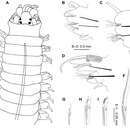en
names in breadcrumbs


Platynereis is a genus of marine annelid worms.[1][2]
The species Platynereis dumerilii is used in development biology to study development (embryogenesis), in particular because their embryos are largely transparent, and thus easy to follow.[3] Apical organs such as this one are photosensitive which is a key component in their formation. They also have a common ancestor with cnidarians and bilaterians.[4]
Platynereis is a genus of marine annelid worms.
The species Platynereis dumerilii is used in development biology to study development (embryogenesis), in particular because their embryos are largely transparent, and thus easy to follow. Apical organs such as this one are photosensitive which is a key component in their formation. They also have a common ancestor with cnidarians and bilaterians.